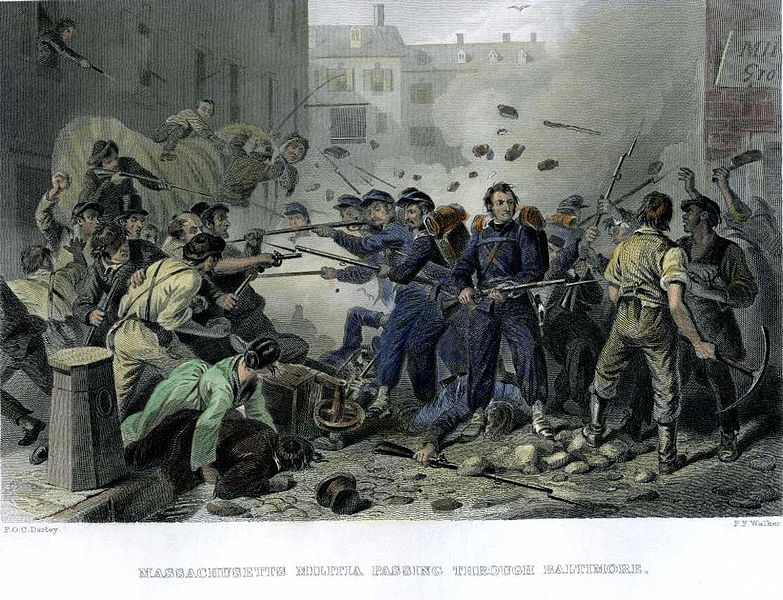Baltimore in the Civil War, Part I
In my last post, I talked about the story of Elizabeth Thorn, and her husband Peter. I’m going to return to that storyline, but I wanted to take a short detour (which may be interesting to readers on its own, really) so that we can get a sense of context.
I spend a lot of time going to Civil War battlefields. That much should be pretty clear from this website. Most of the time, the destination is Gettysburg, but I’ve spent time at Antietam, Manassas, Fredericksburg, Chancellorsville, The Wilderness, and Spotsylvania, too.
What can be easy to forget is that there is history all around us – not just at historical parks and tourist attractions. Recently, I was inspired to dive into some very local history, and I’ve found some pretty cool stuff. In fact, this may become a new rabbit hole for this blog to go down as I find out more and more.
So, let me set the scene a little.
As you may know, Maryland is a border state. It is situated north of Washington, D.C. – a city that was carved out of Maryland, in fact – and up until the end of the Civil War, was a slave-holding state. When Abraham Lincoln was elected in 1860, it was well-known that the Republican party had an abolitionist wing, and there was concern that slavery’s days were numbered. This is what prompted several of the southern states to secede from the Union.
It was imperative that the capital not be surrounded by enemy territory – especially to the north – so it became vital to keep Maryland in the Union by any means necessary. This was made crystal clear on April 19, 1861 (a week after Confederate forces had fired on Fort Sumter) when the 6th Massachusetts Infantry came through Baltimore on its way to Washington.
Back in those days, there was no Amtrak or CSX. Individual companies owned separate rail lines between cities. Troops from the 6th MA came into Baltimore on the Philadelphia, Wilmington, and Baltimore railroad, and then had to travel across town about a mile to reach the station for the Baltimore and Ohio (B&O) railroad to take them into Washington, D.C. It was this transfer between rail lines that caused issues.
In those days, there was a lot of southern sentiment in Baltimore. Thousands of Baltimoreans formed a mob outside of Camden Station to harass the Union troops as they arrived. Some dug cobblestones out of the street to throw at the soldiers. Others put up make-shift blockages in the road and obstructed traffic by their very presence. The men of the 6th MA were forced to abandon the carriages they were in and proceed on foot to the station.
Then a gunshot rang out from the crowd.

Surrounded by hostile citizens and fearing for their lives, the troops returned fire into the crowd.
When it was all said and done, 13 citizens of Baltimore were killed, and many more suffered wounds. The soldiers were able to board and leave on their train, but at least 1 of them was killed, and some of the men were wounded. While certainly not a battle, it was the first blood shed of the war.
The train made its way to Relay, MD, a small stopping-off point on the B&O railroad for travelers on their way to points west. It was about to become a highly-fortified, major strategic location for the Union army. All because of the experience that the 6th MA just had, and the need to defend a famous construction project that was completed nearly 30 years earlier.
3 thoughts on “Baltimore in the Civil War, Part I”